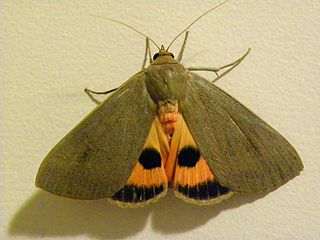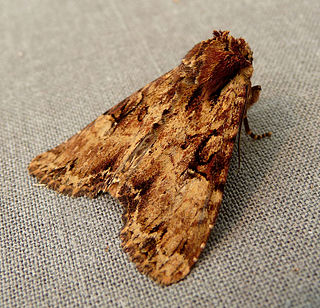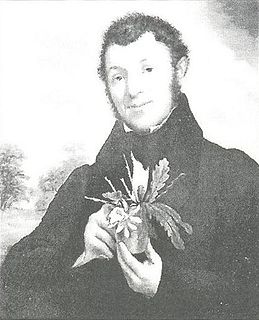
The Pyralini are a tribe of snout moths described by Pierre André Latreille in 1809. They belong to the subfamily Pyralinae, which contains the "typical" snout moths of the Old World and some other regions. The genus list presented here is provisional.

Aglossa pinguinalis, the large tabby or grease moth, is a moth in the subfamily Pyralinae. The species was first described by Carl Linnaeus in his 1758 10th edition of Systema Naturae.

Aglossa caprealis, the stored grain moth, is a moth species of the family Pyralidae. It is found globally, though its native range is presumably western Eurasia or nearby regions, as in other Aglossa species.
Euphyia is a genus of moths in the family Geometridae erected by Jacob Hübner in 1825.

Scopula limboundata, the large lace-border, is a moth of the family Geometridae. It was described by Adrian Hardy Haworth in 1809. It is found in North America east of the Rocky Mountains. There is a single and unconfirmed record from Great Britain.
Aglossa asiatica is a species of snout moth in the genus Aglossa. It was described by Nikolay Grigoryevich Erschoff in 1872. It is found in Uzbekistan, Syria, Iran, Pakistan and on Crete and Cyprus.
Aglossa exsucealis is a species of snout moth in the genus Aglossa. It was described by Lederer, in 1863, from Beirut, Lebanon. It is also found on Cyprus.
Aglossa oculalis is a species of snout moth in the genus Aglossa. It was described by George Hampson in 1906 and is known from the United States, including Texas.
Aglossa phaealis is a species of snout moth in the genus Aglossa. It was described by George Hampson in 1906 and is known from Lesotho and Namibia.
Aglossa rhodalis is a species of snout moth in the genus Aglossa. It was described by George Hampson in 1906 and is known from South Africa, Algeria and Namibia.

Aglossa signicostalis is a species of snout moth in the genus Aglossa. It was first described by Staudinger, in 1871, and is known from Israel, Italy, the Czech Republic, Slovakia, Hungary, Romania, Bulgaria, the Republic of Macedonia and Greece.
Aglossa tinealis is a species of snout moth in the genus Aglossa. It was described by Patrice J.A. Leraut in 2007 and is known from Namibia.

Apamea epomidion, the clouded brindle, is a moth of the family Noctuidae, sub-family Hadeninae. The species was first described by Adrian Hardy Haworth in 1809. It is found throughout continental Europe, the British Isles, Sweden and Central Asia. It is also found in the Altai Mountains, west Siberia, and in Amur.








